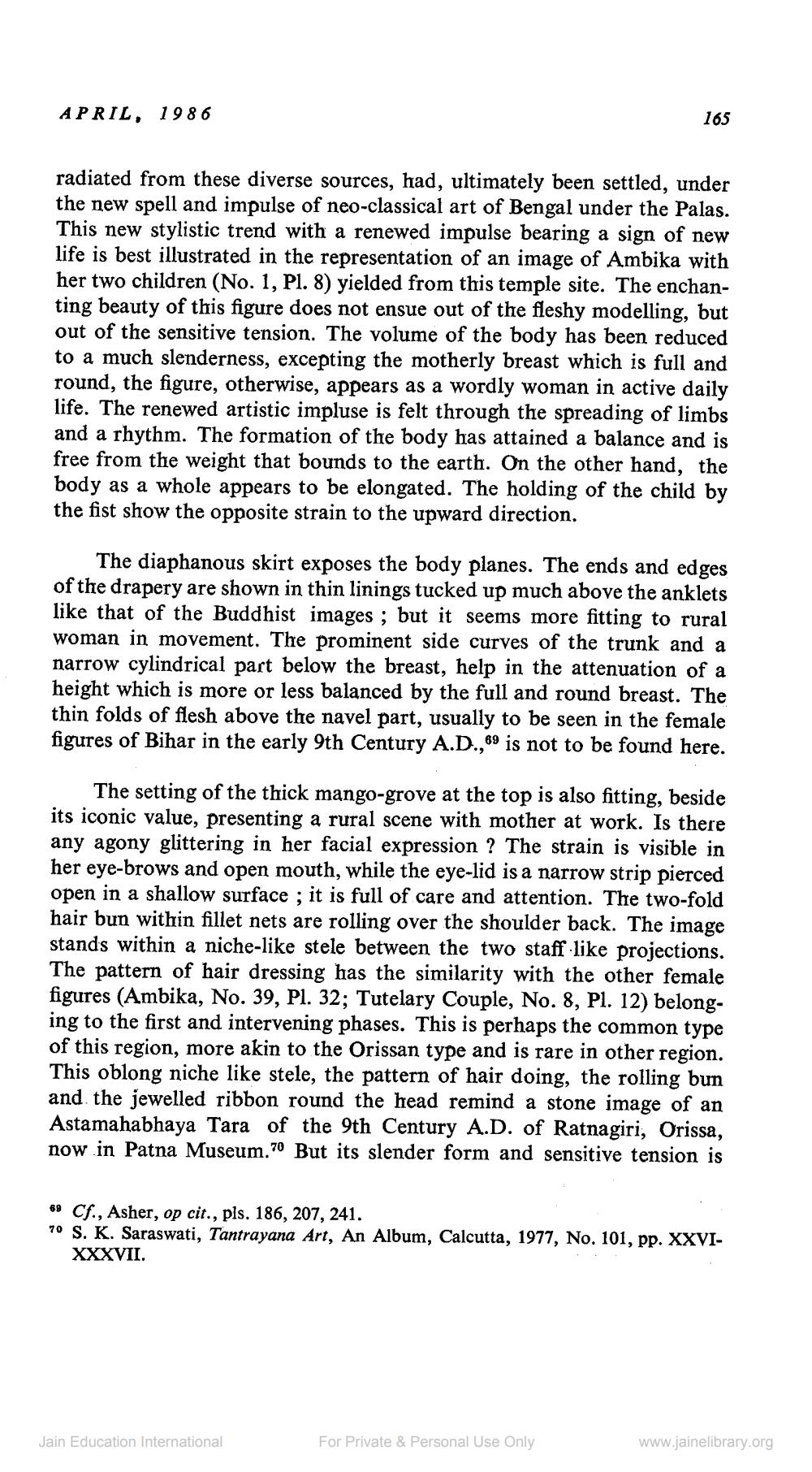________________
APRIL, 1986
radiated from these diverse sources, had, ultimately been settled, under the new spell and impulse of neo-classical art of Bengal under the Palas. This new stylistic trend with a renewed impulse bearing a sign of new life is best illustrated in the representation of an image of Ambika with her two children (No. 1, Pl. 8) yielded from this temple site. The enchanting beauty of this figure does not ensue out of the fleshy modelling, but out of the sensitive tension. The volume of the body has been reduced to a much slenderness, excepting the motherly breast which is full and round, the figure, otherwise, appears as a wordly woman in active daily life. The renewed artistic impluse is felt through the spreading of limbs and a rhythm. The formation of the body has attained a balance and is free from the weight that bounds to the earth. On the other hand, the body as a whole appears to be elongated. The holding of the child by the fist show the opposite strain to the upward direction.
165
The diaphanous skirt exposes the body planes. The ends and edges of the drapery are shown in thin linings tucked up much above the anklets like that of the Buddhist images; but it seems more fitting to rural woman in movement. The prominent side curves of the trunk and a narrow cylindrical part below the breast, help in the attenuation of a height which is more or less balanced by the full and round breast. The thin folds of flesh above the navel part, usually to be seen in the female figures of Bihar in the early 9th Century A.D.,69 is not to be found here.
The setting of the thick mango-grove at the top is also fitting, beside its iconic value, presenting a rural scene with mother at work. Is there any agony glittering in her facial expression? The strain is visible in her eye-brows and open mouth, while the eye-lid is a narrow strip pierced open in a shallow surface; it is full of care and attention. The two-fold hair bun within fillet nets are rolling over the shoulder back. The image stands within a niche-like stele between the two staff like projections. The pattern of hair dressing has the similarity with the other female figures (Ambika, No. 39, Pl. 32; Tutelary Couple, No. 8, Pl. 12) belonging to the first and intervening phases. This is perhaps the common type of this region, more akin to the Orissan type and is rare in other region. This oblong niche like stele, the pattern of hair doing, the rolling bun and the jewelled ribbon round the head remind a stone image of an Astamahabhaya Tara of the 9th Century A.D. of Ratnagiri, Orissa, now in Patna Museum.70 But its slender form and sensitive tension is
69 Cf., Asher, op cit., pls. 186, 207, 241.
70 S. K. Saraswati, Tantrayana Art, An Album, Calcutta, 1977, No. 101, pp. XXVIXXXVII.
Jain Education International
For Private & Personal Use Only
www.jainelibrary.org




